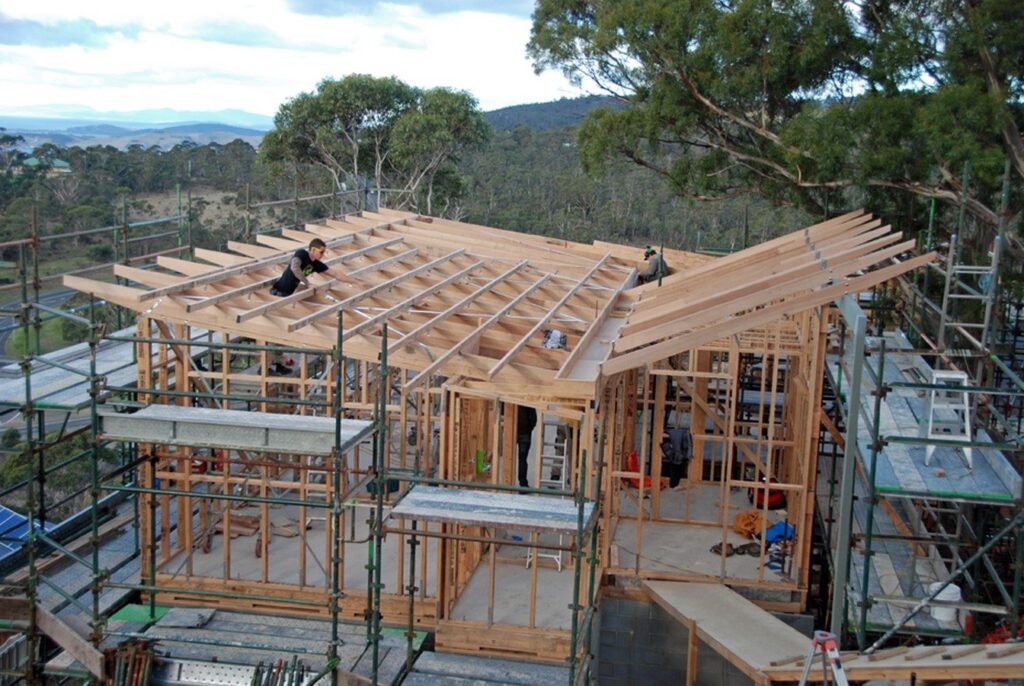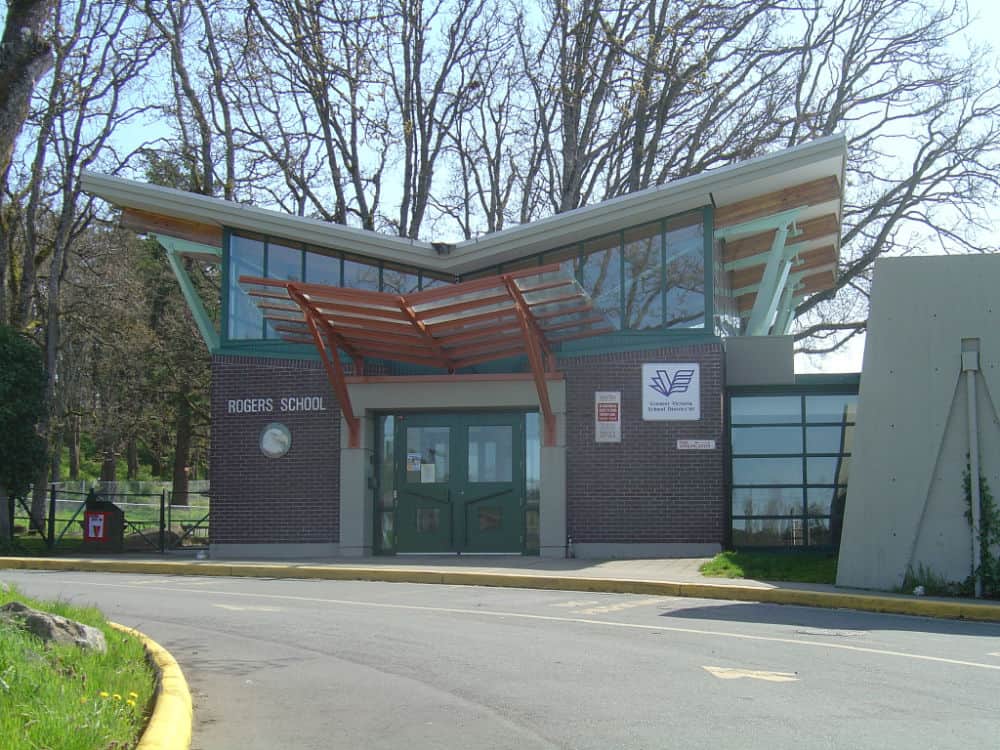Table of Contents
If you’re looking for a roof that makes a bold statement, a butterfly roof might just be the perfect choice for your home. This modern, sleek design features two sloping roof planes that meet in the middle, forming a “V” shape reminiscent of butterfly wings. But before you commit to this architectural style, there are a few important things you should know. In this guide, we’ll cover everything from the design and benefits to potential drawbacks, costs, and practical considerations when installing butterfly roofing.
What is a Butterfly Roof?
A butterfly roof (also known as butterfly house roofing or butterfly roof architecture) is characterized by two roof slopes that angle downwards toward a central valley. The result is an inverted “V” shape, where the high outer walls make room for large windows and offer more space for natural light. This type of design is often seen in modern homes and is considered a standout feature due to its striking aesthetic.
The butterfly roofing structure is an intriguing architectural style that combines both visual appeal and functionality. Characterized by two angled roof sections that slope inward, this design allows for improved drainage and even the potential for rainwater collection, making it an eco-friendly choice. When exploring homes with this type of roof, you’ll often come across terms like butterfly roof house or butterfly roofing houses, referring to buildings that feature this distinct and modern design. This roofing style not only serves a practical purpose but also contributes to a unique aesthetic, blending beauty with utility.
Why Choose a Butterfly Roof?
There are many reasons homeowners are drawn to butterfly roofing designs. Let’s break down the benefits:
- Sleek, Modern Aesthetic: The inverted “V” shape gives your home a futuristic, minimalist look that blends well with modern architecture. It creates a clean, open feel both inside and out.
- Enhanced Natural Light: The inward slope allows for higher walls and larger windows, bringing more sunlight into your home and creating an airy atmosphere.
- Efficient Rainwater Collection: One of the standout features of butterfly roofing is its ability to channel rainwater into a central valley. This makes it ideal for rainwater harvesting, which can be used for landscaping or other purposes.
- Energy-Efficient Design: The design can offer better energy efficiency by reducing the need for artificial lighting and offering the possibility of integrating solar panels on the roof’s flat surfaces.
The Trade-Offs: Potential Drawbacks

Credit: re-thinkingthefuture.com
As beautiful and functional as butterfly roofs are, there are a few things to consider before diving in:
- Higher Costs: The butterfly roofing prices can be higher than traditional roof designs due to the complexity of the structure, materials, and installation.
- Maintenance Concerns: The central valley, while great for water collection, can also trap debris, leaves, and dirt. Without proper maintenance, this can lead to blockages and drainage issues.
- Snow & Ice Management: In areas with heavy snowfall, the inward slope can cause snow to accumulate in the valley, potentially causing drainage problems or overloading the roof structure.
- Limited Attic Space: The inverted roofline often means less usable attic or loft space due to the low pitch at the center of the roof.
How to Evaluate If Butterfly Roofing is Right for You
Before choosing butterfly roofing, ask yourself these important questions to determine if it fits your home and lifestyle:
- Climate: Does your local climate support a design that channels water toward the center? If you live in a rainy or snowy area, make sure the roof’s drainage system is designed to handle the flow of water and snow.
- Budget: Are you prepared for the higher installation costs of butterfly roofing houses? While the aesthetic is appealing, the cost can be a major factor for some homeowners.
- Architectural Style: Does the modern, eye-catching look of a butterfly roof house fit with the overall design of your home and neighborhood?
- Maintenance: Can you commit to maintaining the butterfly roof drainage system, ensuring that water can flow freely without blockage from leaves or debris?
- Energy Goals: Do you want to take advantage of solar panels or rainwater collection? A butterfly roof structure is ideal for both purposes.
Types of Butterfly Roofs

Credit: cupapizarras.com
There are a few variations of butterfly roofs that offer different aesthetics and functions:
- Symmetrical Butterfly Roof: Both roof slopes are equal in pitch and length, creating a perfectly balanced “V” shape.
- Asymmetrical Butterfly Roof: One slope is steeper or longer than the other, creating a more dynamic, uneven look.
- Single Butterfly Module: A single inverted “V” design, often used for smaller homes or extensions.
- Multiple Butterfly Modules: Several butterfly roofing sections combined to form a larger roof structure. This is often used for bigger homes or commercial buildings.
- Material Variations: Common materials include metal, concrete, and membrane roofing, all of which can influence the roof’s performance and durability.
Butterfly Roof Drainage: Keep It Flowing
The most important aspect of a butterfly roof is the drainage system. Since water flows towards the center of the roof, a well-designed valley, proper waterproofing, and efficient downspouts are critical to avoid water pooling or leaks. Here’s how to keep it in top shape:
- Proper Slope: Ensure the valley has an adequate slope to direct water away from the center and into the downspouts.
- Regular Maintenance: Clear the valley of debris such as leaves, twigs, and dirt to prevent blockages.
- Upgraded Drainage Systems: Consider installing rain chains or rain barrels for efficient water collection.
Cost of Installing Butterfly Roofing
As with any roof design, butterfly roofing prices vary based on several factors, including your home’s size, the materials used, and the complexity of installation. Generally, the costs are higher than traditional roof types due to the specialized labor and materials required. Some factors that influence the cost include:
- Materials: Choose between metal roofing, shingles, or flat membranes.
- Labor Costs: Since butterfly roofing requires skilled labor, the installation process tends to be more expensive.
- Roof Size: Larger homes or multi-module butterfly roofs will increase the cost.
- Drainage System: An effective drainage system, which may include custom gutters or rainwater harvesting equipment, adds to the cost.
Is Butterfly Roofing Right for You?

Credit: mrroof.com
So, should you install butterfly roofing? If you love modern, bold designs and want a roof that stands out, this could be the perfect option. Just make sure you’re prepared for the extra costs and maintenance required to keep it looking and functioning at its best.
Final Word
Wrapping up, if you’re thinking of installing a butterfly roof, know that you’re investing not just in a roof but in a design statement. It offers aesthetic rewards and functional bonuses (light, drainage, and rain collection), but it also demands higher attention to structure, waterproofing, drainage, and cost.
If you proceed, work with architects and roofing contractors familiar with butterfly roof details—one misdesigned valley can mean leaks, ponding water, or expensive rework. But when done right, the effect is striking, modern, and full of character.
Frequently Asked Questions
Got questions? Let’s quickly answer them!
What is a butterfly roof?
A butterfly roof is an inverted “V” shape where two sloped planes meet in the center, allowing for more light and rainwater collection.
Does a butterfly roof cost more than a regular roof?
Yes, it tends to be more expensive due to its unique structure, complex design, and specialized materials.
Is butterfly roofing good for rainwater harvesting?
Absolutely! The central valley naturally channels water into a central drain, making it ideal for rain collection.
Are butterfly roofs suitable for all climates?
Not always. They’re not the best choice for regions with heavy snow, as the central valley can trap snow and create drainage issues.
Do butterfly roofs add value to a home?
They can, especially for modern or architecturally unique homes. However, their impact on resale depends on buyer preferences and local trends.
